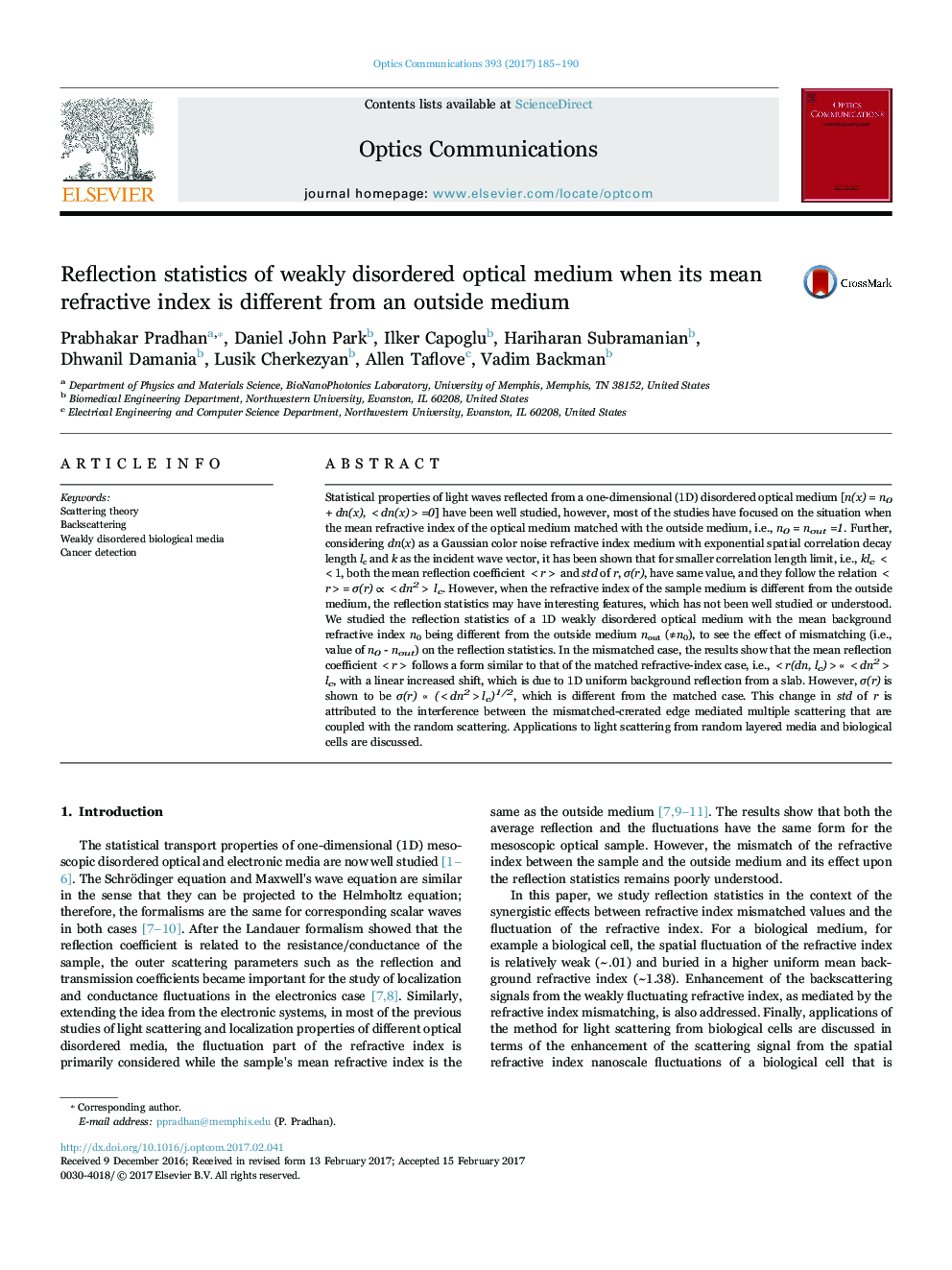| Article ID | Journal | Published Year | Pages | File Type |
|---|---|---|---|---|
| 5449489 | Optics Communications | 2017 | 6 Pages |
Abstract
Statistical properties of light waves reflected from a one-dimensional (1D) disordered optical medium [n(x) = n0+ dn(x), =0] have been well studied, however, most of the studies have focused on the situation when the mean refractive index of the optical medium matched with the outside medium, i.e., n0= nout=1. Further, considering dn(x) as a Gaussian color noise refractive index medium with exponential spatial correlation decay length lc and k as the incident wave vector, it has been shown that for smaller correlation length limit, i.e., klc <<1, both the mean reflection coefficient and std of r, Ï(r), have same value, and they follow the relation = Ï(r) â lc. However, when the refractive index of the sample medium is different from the outside medium, the reflection statistics may have interesting features, which has not been well studied or understood. We studied the reflection statistics of a 1D weakly disordered optical medium with the mean background refractive index n0 being different from the outside medium nout (â n0), to see the effect of mismatching (i.e., value of n0- nout) on the reflection statistics. In the mismatched case, the results show that the mean reflection coefficient follows a form similar to that of the matched refractive-index case, i.e., â lc, with a linear increased shift, which is due to 1D uniform background reflection from a slab. However, Ï(r) is shown to be Ï(r) â (lc)1/2, which is different from the matched case. This change in std of r is attributed to the interference between the mismatched-crerated edge mediated multiple scattering that are coupled with the random scattering. Applications to light scattering from random layered media and biological cells are discussed.
Related Topics
Physical Sciences and Engineering
Materials Science
Electronic, Optical and Magnetic Materials
Authors
Prabhakar Pradhan, Daniel John Park, Ilker Capoglu, Hariharan Subramanian, Dhwanil Damania, Lusik Cherkezyan, Allen Taflove, Vadim Backman,
